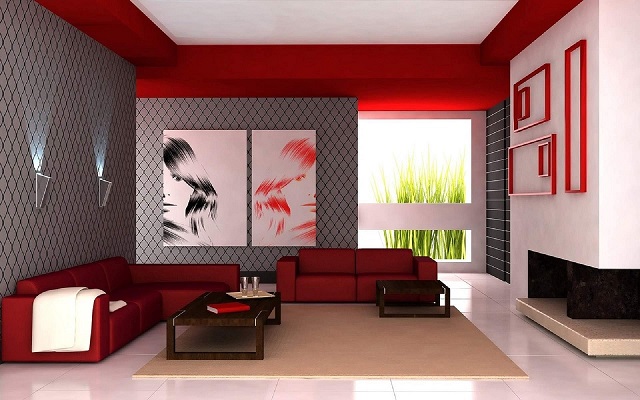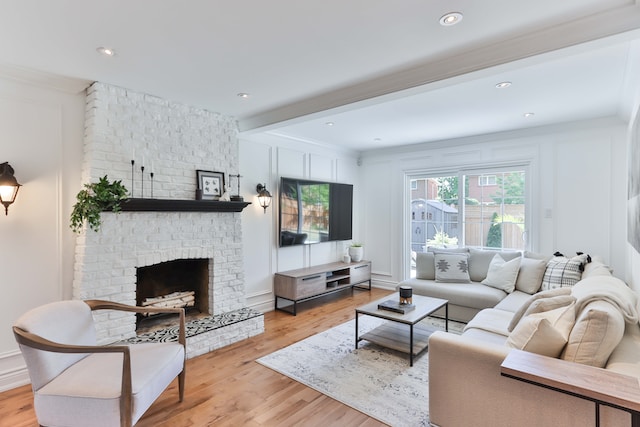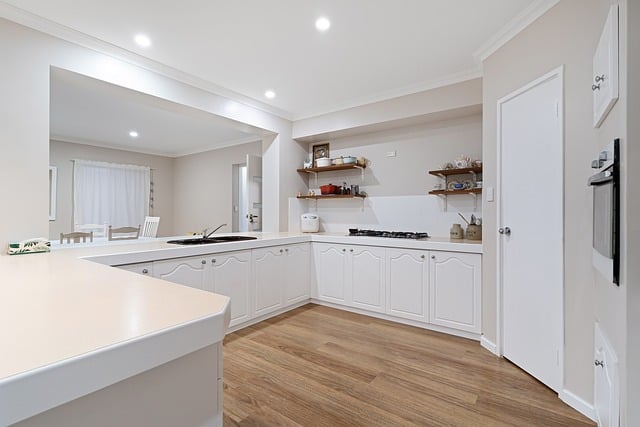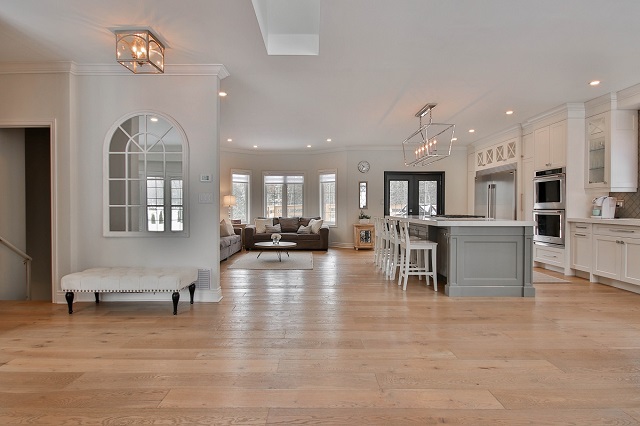Which Projects to Prioritize When You Buy a Fixer Upper

Table of Contents
Assessing the Condition of the Fixer Upper
When considering purchasing a fixer upper, it is crucial to thoroughly assess its condition before making any commitments. This assessment will give you valuable insights into the extent of repairs and improvements needed and will help you determine if the investment is worth your time and money.
One important aspect to evaluate is the structural stability of the property. Look for any cracks in the walls or foundation, sagging floors, or bowing walls, as these could indicate more significant issues that may require professional attention. Additionally, take note of any signs of water damage or pest infestation, as these can also have an impact on the overall condition of the fixer upper.
Structural Repairs and Improvements
Once you have assessed the condition of your fixer-upper, it’s time to turn your attention to the structural repairs and improvements that may be necessary. This phase often involves addressing issues related to the foundation, walls, and overall stability of the property. Hiring a professional inspector or contractor can help you identify any structural weaknesses or damage that needs to be addressed.
Foundation repairs may be needed if you notice cracks, uneven floors, or doors that don’t close properly. These issues can indicate a compromised foundation, and it’s crucial to fix them before moving forward with any other renovations. Similarly, addressing wall repairs, such as filling in cracks or repairing holes, will ensure a solid and stable structure for your home. By prioritizing structural repairs and improvements, you are laying the foundation for a smoother and more successful renovation process.
Addressing Safety Concerns
Taking care of safety concerns should be a top priority when considering a fixer-upper property. One of the most common safety issues in older homes is outdated electrical systems. It is essential to inspect the wiring and circuitry to ensure they meet current safety standards. Rewiring and upgrading the electrical panel may be necessary to prevent electrical hazards such as fires or electrical shocks.
Another important aspect of addressing safety concerns is ensuring the property is equipped with adequate smoke and carbon monoxide detectors. These detectors are vital for early detection of fire and carbon monoxide leaks, providing necessary warnings to protect the occupants. Installing these detectors in key locations throughout the house, including bedrooms and common areas, can significantly enhance the safety of the home. Additionally, it is crucial to check the condition of existing fire extinguishers and replace them if they are expired or damaged.
Plumbing and Electrical Updates
Plumbing and electrical systems are crucial aspects to consider when updating a fixer upper. A thorough inspection of these essential components is necessary to identify any existing issues and potential risks. It is important to address plumbing concerns, such as leaks, clogs, and outdated pipes, to ensure proper water supply and drainage throughout the house. Upgrading the electrical system is similarly vital, as outdated wiring can pose safety hazards and may not meet modern codes. By replacing old fixtures, outlets, and wiring, homeowners can not only improve the functionality and reliability of their home’s plumbing and electrical systems but also enhance its overall safety.
Upgrading the plumbing and electrical systems in a fixer upper also presents an excellent opportunity to incorporate technology and energy-efficient features. The installation of low-flow toilets, water-efficient faucets, and showerheads can significantly reduce water consumption and monthly utility bills. Similarly, upgrading to energy-efficient lighting, programmable thermostats, and smart home systems can enhance efficiency and convenience. However, it is essential to consult with professionals to ensure that these updates meet local building codes and regulations. By combining functionality, safety, and modern technology, homeowners can revamp the plumbing and electrical systems of their fixer upper to create a comfortable and sustainable living space.
Roofing and Foundation Repairs
Roofing and foundation repairs are essential aspects when it comes to assessing the condition of a fixer-upper. Neglecting these areas can lead to significant structural issues down the line, causing additional expenses and potential safety hazards. In terms of the roof, it is crucial to inspect for any signs of damage or deterioration such as missing shingles, leaks, or sagging areas. Repairs or even a complete replacement may be necessary to ensure the integrity of the property. Similarly, evaluating the foundation is of utmost importance as any cracks or instability can pose serious risks to the structural stability of the entire home. Addressing these issues early on will not only prevent further deterioration but can also save homeowners from major headaches and costly repairs in the future.
When dealing with roofing and foundation repairs, it is advisable to seek professional assistance. Hiring a licensed contractor or structural engineer can help identify the extent of the damage and provide appropriate solutions. For roofing, the contractor will be able to recommend the most suitable materials and techniques for repair or replacement. Additionally, they can address any underlying issues such as improper ventilation or insulation that could be contributing to the roof’s deterioration. In terms of the foundation, a structural engineer can conduct a thorough examination to determine the cause of any cracks or movement. Depending on the severity of the damage, solutions may range from simple patching to more complex underpinning or reinforcement methods. Professional guidance will ensure that the roofing and foundation repairs are done correctly and in compliance with building codes and regulations.
• Neglecting roofing and foundation repairs can lead to significant structural issues down the line
• Signs of roof damage include missing shingles, leaks, or sagging areas
• Repairs or replacement may be necessary to ensure the integrity of the property
• Evaluating the foundation is important as cracks or instability can pose serious risks
• Addressing these issues early on prevents further deterioration and costly repairs in the future
• Seek professional assistance for roofing and foundation repairs
• Hiring a licensed contractor or structural engineer is advisable
• They can identify the extent of damage and provide appropriate solutions
• Contractors can recommend suitable materials and techniques for repair or replacement
• They address underlying issues like improper ventilation or insulation that contribute to deterioration
• Structural engineers conduct thorough examinations to determine causes of cracks or movement
• Solutions range from simple patching to complex underpinning methods
• Professional guidance ensures repairs comply with building codes and regulations
HVAC System Upgrades
When considering a fixer-upper, it is crucial to assess the condition of the HVAC system and determine if upgrades are necessary. An outdated or malfunctioning HVAC system can result in discomfort and increased energy costs, making it a priority for improvement. Start by inspecting the existing system, checking for any signs of wear or damage. Look out for leaks, strange noises, or uneven air distribution. Additionally, assess the system’s age and energy efficiency rating to determine if an upgrade is warranted.
Upgrading the HVAC system in a fixer-upper offers numerous benefits. First and foremost, it ensures optimal comfort by providing efficient heating and cooling throughout the house. This is especially important if the fixer-upper is located in an area with extreme climates. Furthermore, a new HVAC system can significantly reduce energy consumption, resulting in lower utility bills. Additionally, modern systems often incorporate smart technology, allowing for greater control and programmability. Investing in HVAC upgrades not only enhances the overall livability of a fixer-upper but also increases its value and appeal to potential buyers.
Insulation and Energy Efficiency Enhancements
Insulation plays a crucial role in maintaining a comfortable indoor environment while also lowering energy consumption. When assessing the insulation in a fixer upper, it is important to check for any signs of damage or deterioration. Common types of insulation found in older homes include fiberglass batts, foam insulation, and cellulose insulation. In some cases, the insulation may have settled or become compacted over time, reducing its effectiveness. Upgrading the insulation can improve energy efficiency and help reduce heating and cooling costs.
In addition to insulation, there are various energy efficiency enhancements that can be implemented in a fixer upper. One of the key areas to focus on is sealing air leaks. Air leaks in the building envelope, such as around windows and doors, can result in significant energy loss. Weatherstripping, caulking, and adding additional insulation around these areas can help prevent drafts and improve energy efficiency. Installing energy-efficient windows and doors can also make a noticeable difference in the overall energy performance of the home. Furthermore, upgrading to energy-efficient appliances, such as refrigerators, dishwashers, and washing machines, can further reduce energy consumption and save on utility bills. By addressing insulation and energy efficiency enhancements in a fixer upper, homeowners can create a more comfortable and cost-effective living space.
Remodeling the Kitchen
One of the most important areas to focus on when remodeling a fixer upper is the kitchen. The kitchen is often considered the heart of the home, where families gather to cook, eat, and socialize. When assessing the condition of the kitchen, it is crucial to look for outdated appliances, worn-out countertops, damaged cabinets, and inadequate storage space. These factors can greatly affect the functionality and aesthetics of the kitchen. It is recommended to prioritize the replacement of old appliances with energy-efficient models that not only improve convenience but also contribute to long-term savings. Upgrading countertops to durable materials, such as granite or quartz, can enhance the overall look and feel of the kitchen while also increasing its resale value.
In addition to appliances and countertops, cabinets play a crucial role in the overall organization and storage capacity of the kitchen. If the existing cabinets are worn, damaged, or simply outdated, consider replacing them with modern designs that offer ample space for storing kitchen essentials. Opt for cabinets made of high-quality materials to ensure durability and longevity. To add a touch of elegance and functionality, consider installing features such as soft-close drawers and pull-out organizers. By remodeling the kitchen and addressing these key areas, you can transform an outdated space into a functional, stylish, and inviting hub for culinary creativity and family gatherings.
Bathroom Renovations
When considering bathroom renovations for a fixer-upper, there are several key areas to focus on to enhance both functionality and aesthetics. One important aspect is the plumbing system, which should be thoroughly inspected for any leaks, clogs, or outdated fixtures. Updating the plumbing can improve the overall performance of the bathroom and prevent any future issues. Additionally, it is crucial to assess the condition of the bathroom’s flooring, as worn-out or damaged tiles can create an unpleasant appearance. Replacing the flooring with a more modern and durable option, such as ceramic or vinyl tiles, can significantly enhance the bathroom’s visual appeal and longevity.
Another crucial aspect to consider in bathroom renovations is the lighting. Adequate lighting can greatly enhance the functionality and ambiance of the space. Installations such as recessed lighting or vanity lights can provide ample illumination for grooming and tasks, while also creating a warm and inviting atmosphere. Additionally, incorporating natural light through a well-placed window or skylight can bring in a fresh and airy feel to the bathroom. It is also essential to address the ventilation system to prevent moisture buildup, which can lead to mold and mildew growth. Installing an exhaust fan or improving the existing one can effectively enhance air circulation and eliminate excess humidity, ensuring a healthier and more comfortable bathroom environment.
Flooring Replacement or Restoration
When it comes to the flooring in a fixer upper, the condition of the existing material should be carefully assessed. If the current flooring is worn-out, damaged, or simply outdated, replacement or restoration may be necessary. The choice between replacement and restoration depends on various factors, including budget, durability, and aesthetics.
For homeowners looking to achieve a timeless and classic look, hardwood flooring is often the preferred option. Hardwood floors can be sanded and refinished multiple times, making them a durable and long-lasting choice. However, hardwood can be quite expensive, and it may not be suitable for areas prone to moisture, such as bathrooms or basements. In such cases, laminate or tile flooring could be more suitable alternatives, offering the look of hardwood at a more affordable price point. Additionally, carpeting can be a cozy and budget-friendly option for bedrooms and living rooms, providing comfort underfoot and sound insulation. Ultimately, the choice of flooring material will depend on the homeowner’s preferences, budget, and the specific needs of each room in the fixer upper.
Painting and Wall Repairs
Painting and wall repairs play a crucial role in refreshing the overall appearance of a fixer-upper property. Whether it’s old and faded paint, cracked walls, or outdated wallpaper, addressing these issues can drastically enhance the aesthetic appeal of the space. When assessing the condition of the property, it is important to include a thorough evaluation of the walls and determine the extent of the repairs needed. This includes identifying any water damage, holes, or uneven surfaces that may require patching or plastering. Additionally, evaluating the quality of the existing paint is important to determine if a fresh coat is necessary or if stripping and sanding will be required. Once the repairs are complete, choosing the right color palette and paint finish can give the interior a modern and inviting feel, while taking into consideration the style and preferences of future residents. Well-executed painting and wall repairs can significantly enhance the livability and market value of a fixer-upper property.
Landscaping and Outdoor Improvements
When it comes to the overall aesthetic appeal of a fixer-upper, landscaping and outdoor improvements play a crucial role. The exterior of a property is the first thing potential buyers or tenants see, and making a positive first impression is essential. Landscaping can greatly enhance the curb appeal of a property, adding value and making it more enticing to potential buyers. It involves various elements, such as the design and installation of gardens, the selection and placement of plants, the addition of pathways and patio areas, and the installation of outdoor lighting. A well-designed and well-maintained outdoor space can create a welcoming atmosphere and provide an attractive outdoor living area for future residents or homeowners.
In addition to aesthetic appeal, outdoor improvements also encompass functional aspects that contribute to the overall usability and enjoyment of the property. This may include the construction or renovation of decks and patios, the addition of fences or privacy screens, the installation of water features or irrigation systems, and the creation of outdoor entertainment areas such as fire pits or barbecuing spaces. These improvements not only enhance the livability of the property but also provide opportunities for relaxation and recreation. Furthermore, a well-maintained outdoor space can increase the property’s desirability and contribute to a positive overall living experience for the occupants.
Upgrading Fixtures and Hardware
Upgrading fixtures and hardware is a crucial aspect of renovating a fixer-upper. By replacing outdated fixtures and worn-out hardware, you can significantly enhance the aesthetics and functionality of your home. One area where upgrading fixtures can make a noticeable difference is in the kitchen. Consider installing modern and energy-efficient faucets, as well as stylish cabinet handles and knobs that complement the overall design. These small details can instantly transform an outdated kitchen into a more contemporary and visually appealing space. Additionally, upgrading fixtures in bathrooms, such as replacing old showerheads and bathroom accessories, can add a touch of luxury and increase the overall value of your property.
In addition to upgrading fixtures, updating hardware throughout your home is another important aspect of the renovation process. From doorknobs and hinges to light switches and power outlets, replacing old and worn-out hardware can provide a fresh and updated look. Moreover, choosing hardware that matches your desired aesthetic style can create a cohesive and harmonious atmosphere in your home. Whether you prefer sleek and modern or traditional and rustic, there is a wide variety of hardware options available to suit every taste. By devoting attention to these seemingly minor details, the overall transformation of your fixer-upper can be elevated to a whole new level, leaving you with a beautiful and satisfying end result.






